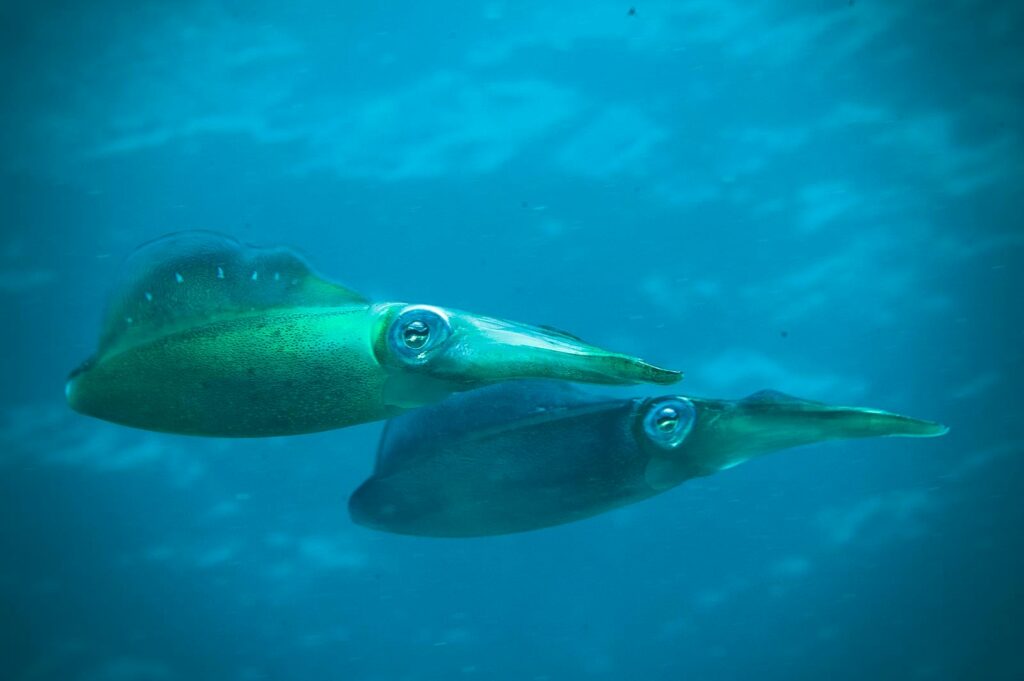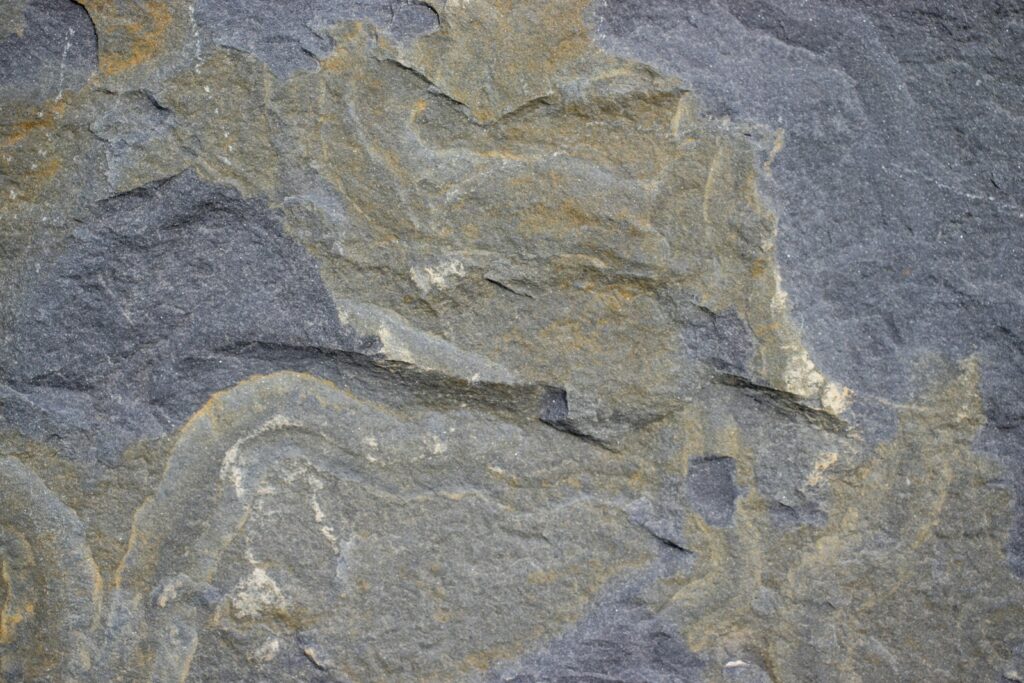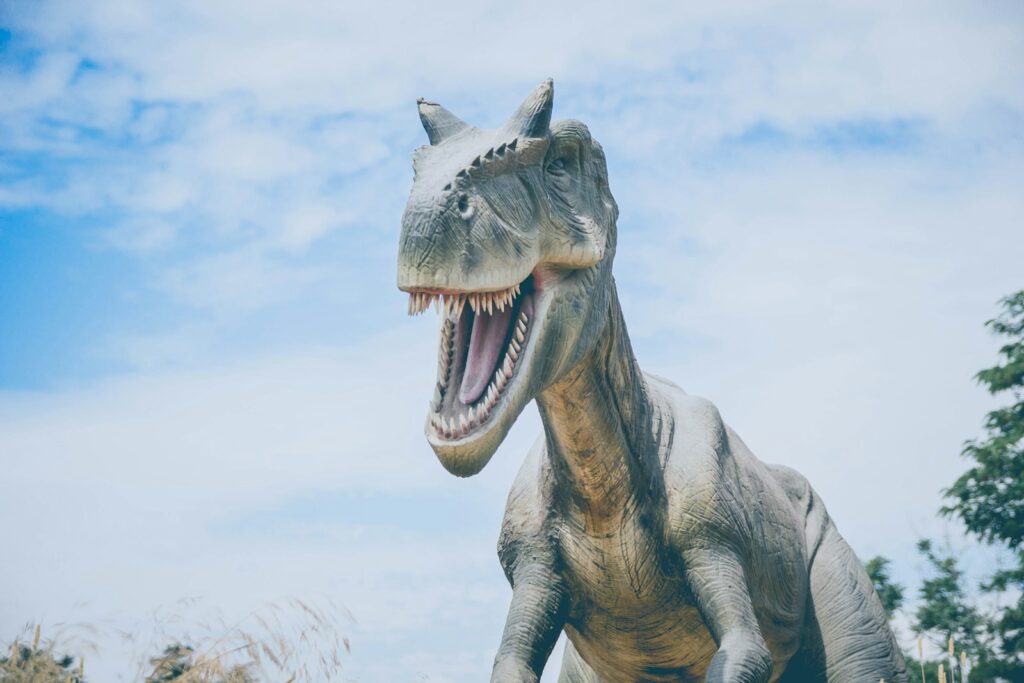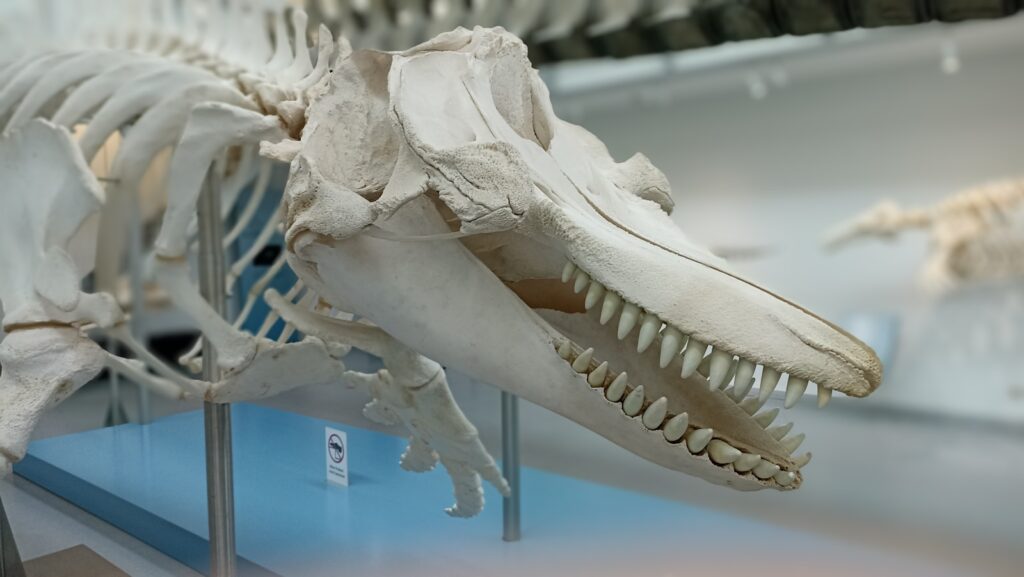The depths of our prehistoric oceans once harbored creatures of such immense proportions that they seem almost mythological by today’s standards. Among these leviathans was a colossal cephalopod that dwarfed even the impressive giant squids of our modern seas. This prehistoric giant squid, stretching over 50 feet in length, represents one of the most fascinating marine predators ever to have existed.
Its massive tentacles, intelligent hunting strategies, and mysterious existence have captivated paleontologists and marine biologists for generations. From its evolutionary origins to its eventual disappearance, this massive creature’s story offers a window into an ancient world where the oceans teemed with giants that modern humans can scarcely imagine.
The Evolutionary Origins of Giant Cephalopods

The ancient giant squid belongs to a lineage of cephalopods that evolved over 500 million years ago, making them some of the oldest complex organisms on Earth. These prehistoric squids descended from primitive mollusks that gradually developed more sophisticated features, including multiple arms, advanced eyes, and powerful beaks. Fossil evidence suggests that cephalopods underwent a significant evolutionary radiation during the Ordovician period (485-443 million years ago), diversifying into numerous species that occupied various marine ecological niches.
The ancestors of the 50-foot prehistoric squid likely emerged during the Mesozoic Era, when marine predators were engaged in an evolutionary arms race that favored increasing size and hunting efficiency. Through natural selection, these creatures evolved from smaller ancestors into the ocean behemoths that would eventually dominate their underwater realm, developing sophisticated neurological systems that allowed for complex hunting behaviors despite their invertebrate status.
Reconstructing a Prehistoric Giant: The Fossil Record

Reconstructing the exact appearance and dimensions of prehistoric giant squids presents unique challenges for paleontologists due to the soft-bodied nature of these creatures. Unlike dinosaurs with their fossilizable bones, squids possess few hard parts that can survive the fossilization process, primarily their chitinous beaks and pen (a vestigial internal shell).
Fortunately, rare but significant fossil discoveries in fine-grained sedimentary deposits have provided crucial insights into these magnificent creatures. These exceptional preservation sites, known as Lagerstätten, occasionally preserve soft tissue impressions that have allowed scientists to estimate the immense proportions of these ancient cephalopods.
Particularly valuable discoveries include massive fossilized hooks from the tentacles of ancient squids, beaks the size of dinner plates, and rare body outline impressions that hint at their extraordinary size. By comparing these remains with the anatomy of modern relatives and using advanced scaling methods, paleontologists have been able to estimate that some specimens indeed reached lengths exceeding 50 feet—roughly the length of a modern school bus.
The Tusoteuthis: A Prime Example of Prehistoric Giant Squids
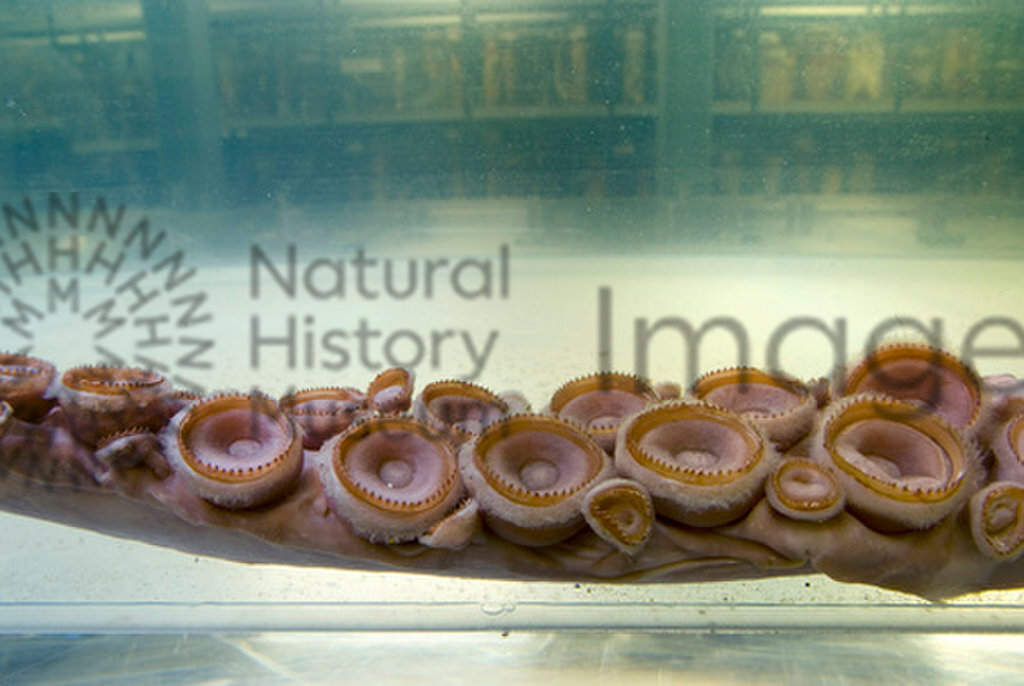
Among the most notable prehistoric giant squids was Tusoteuthis longa, a massive cephalopod that lived during the Late Cretaceous period approximately 70-65 million years ago. This colossal creature inhabited the Western Interior Seaway, a vast inland sea that split North America into two landmasses. Fossil evidence suggests that Tusoteuthis could reach lengths of 35 feet or more, with some estimates placing larger specimens at the 50-foot threshold mentioned in accounts of prehistoric giant squids.
Unlike modern squids with their two distinct longer tentacles among eight arms, Tusoteuthis possessed ten appendages of roughly equal length, each armed with powerful hooks rather than the suction cups seen in many modern cephalopods. These hooks, some measuring several inches long, would have allowed Tusoteuthis to grasp and secure struggling prey with devastating efficiency, making it one of the most formidable predators in the prehistoric ocean ecosystem. The creature’s massive mantle (body) housed sophisticated jet propulsion systems that likely allowed it to achieve remarkable bursts of speed despite its enormous size.
Anatomical Adaptations for Deep-Sea Dominance

The 50-foot prehistoric giant squid possessed numerous anatomical adaptations that enabled it to reign as an apex predator in ancient oceans. Its enormous eyes, possibly the largest of any animal to have ever existed, may have measured up to 18 inches in diameter—providing exceptional vision in the dimly lit depths where it hunted. These massive visual organs contained millions of photoreceptors arranged in a sophisticated structure that allowed the creature to detect both the faintest bioluminescent signals and the subtle movements of potential prey or predators.
The squid’s muscular mantle housed a highly efficient respiratory system that extracted oxygen from seawater, while its three hearts—one systemic and two branchial—pumped blue copper-based blood throughout its massive body. Perhaps most impressive was its advanced nervous system, centered around a donut-shaped brain that encircled its esophagus, with neural connections extending throughout its body in a distributed network that allowed for both centralized and localized control of its numerous appendages. This neural arrangement permitted lightning-fast reflexes and complex hunting behaviors despite the limitations of signal transmission across its enormous body.
Hunting Strategies of an Ocean Giant

Despite their enormous size, prehistoric giant squids were active predators rather than slow-moving filter feeders, employing sophisticated hunting strategies to capture prey. These massive cephalopods likely used a combination of ambush tactics and swift pursuit, hovering in deeper waters before rapidly ascending to attack prey items silhouetted against the surface light—a technique known as “counter-illumination predation.” Their hunting arsenal included ten powerful appendages equipped with sharp hooks or suckers that could stretch out in a deadly embrace, capable of subduing prey almost instantly.
The squid’s powerful beak, made of chitin reinforced with proteins and minerals, could deliver devastating bites that few creatures could withstand. Some fossil evidence suggests these prehistoric giants may have engaged in coordinated hunting behaviors, potentially working together to herd and capture schools of fish or to take down larger prey that a single individual might find challenging. Their advanced eyes provided excellent vision even in low-light conditions, allowing them to detect the bioluminescent signals of potential prey or to spot the silhouettes of animals swimming above them in shallower waters.
The Giant Squid’s Diet and Ecological Role

The prehistoric giant squid occupied a critical position at the upper echelons of the marine food web, functioning as an apex predator that helped regulate populations of numerous marine species. Analysis of fossilized stomach contents and comparative studies with modern cephalopods suggest these giants likely consumed a diverse diet, including large fish, smaller cephalopods, primitive marine reptiles, and possibly even small cetaceans or plesiosaurs.
Their feeding habits would have exerted significant selective pressure on prey species, potentially driving evolutionary adaptations such as increased swimming speed, defensive behaviors, and protective coloration. These massive predators likely employed both active hunting and opportunistic scavenging strategies, making them versatile consumers capable of exploiting various food sources depending on availability.
Beyond their role as predators, these enormous creatures would have contributed to marine nutrient cycles through their excretions during life and the decomposition of their massive bodies after death, potentially supporting diverse communities of scavengers and detritivores in resource-limited deep-sea environments.
Size Comparison with Modern Giant Squids

The colossal proportions of prehistoric giant squids vastly exceeded those of their modern descendants, highlighting the extraordinary gigantism that characterized many marine creatures in ancient oceans. Today’s giant squid (Architeuthis dux), while impressive in its own right, typically reaches lengths of 33-43 feet, including its tentacles, making it roughly two-thirds the size of its 50-foot prehistoric relative.
The colossal squid (Mesonychoteuthis hamiltoni), another modern deep-sea giant, possesses a more robust body but slightly shorter overall length, typically maxing out around 45 feet. The prehistoric giant’s mantle (main body) alone may have measured 20 feet or more—comparable to the entire body length of many modern marine predators. This extreme size difference reflects changes in marine ecosystems over millions of years, including shifts in prey availability, oceanic oxygen levels, and competitive pressures from emerging predators like toothed whales.
The prehistoric giant’s enormous dimensions would have required significantly more food to sustain, suggesting these creatures either lived in much more productive ancient oceans or had evolved extremely efficient metabolic systems that allowed them to survive on relatively infrequent feeding events.
Ancient Predators and Competitors

Even at their immense size, prehistoric giant squids were not immune to predation in the ancient oceans teeming with fearsome hunters. Among their most formidable adversaries were the mosasaurs—massive marine reptiles that could reach lengths exceeding 50 feet, armed with powerful jaws lined with conical teeth perfect for grasping slippery prey like cephalopods. Fossil evidence, including mosasaur remains with squid beaks in their stomach contents, confirms these dramatic predator-prey relationships.
Ancient sharks, particularly the enormous Cretoxyrhina (the “Ginsu shark”) and the later-evolving megalodon, would have presented serious threats to even the largest squids. Competition for resources came from other large cephalopods, including the nautiloids and ammonites, which occupied similar ecological niches in certain regions. These competitive and predatory pressures likely drove the evolution of the squid’s remarkable defensive adaptations, including its ink-ejecting capability, rapid jet propulsion, and sophisticated camouflage systems.
Despite these threats, the prehistoric giant squid’s combination of intelligence, speed, and size allowed it to maintain its position as one of the ocean’s top predators for millions of years across changing marine ecosystems.
Evidence from Ancient Battlegrounds

The prehistoric oceans were theaters of epic confrontations between marine titans, and paleontologists have uncovered compelling evidence of these ancient struggles. Perhaps most dramatic are fossilized remains showing bite marks from large predators on the preserved parts of giant cephalopods, suggesting violent encounters that sometimes ended in the squid’s demise. Equally fascinating are specimens of marine reptiles and prehistoric sharks bearing distinctive scars and embedded hooks that appear to have come from the defensive grasp of massive squid tentacles—silent testimony to battles that the predator survived.
Some remarkable fossil assemblages reveal what appear to be the aftermath of titanic underwater clashes, with the intermingled remains of both predator and prey preserved together in their final moments. Coprolites (fossilized feces) from large marine predators containing partially digested squid beaks provide additional evidence of predation on these giants.
These fossilized snapshots of ancient combat help paleontologists reconstruct the complex predator-prey relationships that shaped marine ecosystems for millions of years, highlighting the evolutionary arms race between increasingly sophisticated hunters and the defensive adaptations of their prey.
The Mystery of Prehistoric Squid Intelligence

The intelligence of prehistoric giant squids remains one of the most fascinating and elusive aspects of these creatures. Modern cephalopods display remarkable cognitive abilities, with octopuses in particular, demonstrating problem-solving skills, tool use, and learning capabilities comparable to some vertebrates—despite their evolutionary divergence from the vertebrate lineage over 500 million years ago.
Fossil evidence suggests that prehistoric giant squids possessed proportionally large brains housed within their cartilaginous cranial sections, potentially indicating similar or even more advanced cognitive abilities than their modern relatives. Their complex neural architecture, with dedicated brain lobes for processing sensory information, motor control, and memory, would have allowed for sophisticated hunting strategies and social behaviors that might have included coordinated hunting or competitive displays.
The adaptive value of intelligence for these ocean giants likely related to their predatory lifestyle, requiring the integration of vast amounts of sensory information, prediction of prey behavior, and execution of complex motor sequences during hunting events. While direct evidence of their behavioral complexity remains limited by the constraints of the fossil record, comparative neurobiology with modern cephalopods suggests these ancient giants may have been among the most intelligent creatures in prehistoric oceans.
Environmental Factors Enabling Gigantism

The extraordinary size of prehistoric giant squids was not merely a product of evolutionary chance but rather emerged from specific environmental conditions that favored and sustained such extreme gigantism. During certain periods of Earth’s history, particularly the late Mesozoic era, oceanic oxygen levels were significantly higher than today, potentially supporting the increased metabolic demands of massive marine organisms.
Higher global temperatures during these periods may have accelerated metabolic rates and growth patterns while also expanding the habitable range of these temperature-sensitive invertebrates. The prehistoric oceans also featured extraordinarily rich food webs fueled by high primary productivity, providing the enormous caloric intake necessary to sustain a 50-foot predatory cephalopod.
The absence of certain modern predators, particularly specialized squid-hunting toothed whales that would later evolve, removed a significant selective pressure that might otherwise have favored smaller, more agile body forms. These favorable conditions created an evolutionary window that allowed cephalopods to reach dimensions that seem almost implausible by contemporary standards, demonstrating the remarkable plasticity of life when presented with suitable environmental conditions over evolutionary timescales.
The Extinction of Ocean Giants

The decline and ultimate disappearance of the 50-foot prehistoric giant squids coincided with several major ecological transitions in Earth’s oceans. Many of these massive cephalopods disappeared during the Cretaceous-Paleogene extinction event approximately 66 million years ago, which eliminated roughly 75% of marine species following the catastrophic asteroid impact at Chicxulub.
This event triggered massive disruptions in marine food webs, causing the collapse of primary productivity that would have starved many top predators, including giant squids with their enormous caloric requirements. Those species that survived this initial catastrophe faced additional challenges during the subsequent Cenozoic era, including changing ocean chemistry, temperature fluctuations, and the evolution of new predators—particularly toothed whales with specialized adaptations for hunting large cephalopods in the deep ocean.
The emergence of echolocating sperm whales around 25 million years ago may have been particularly significant, as these specialized predators could detect and pursue giant squids even in the darkest ocean depths where they had previously found refuge. These combined pressures gradually restricted the ecological space available to extremely large cephalopods, driving evolutionary trends toward the somewhat smaller but still impressive giant squids that inhabit today’s oceans.
Cultural Impact and Modern Parallels

The legacy of prehistoric giant squids extends far beyond their biological significance, permeating human culture and scientific inquiry in numerous ways. Ancient maritime legends from cultures worldwide describe encounters with enormous tentacled sea monsters—potentially reflecting ancestral memories of these creatures or rare encounters with their somewhat smaller modern descendants.
The “kraken” of Norse mythology, with its ship-destroying capabilities, bears striking similarities to scientific descriptions of prehistoric giant squids, suggesting a possible connection between paleontological reality and cultural folklore.
These ancient ocean giants have captured the imagination of modern audiences through documentaries, museum exhibitions, and artistic reconstructions that attempt to convey their awe-inspiring dimensions. Scientific interest in these prehistoric leviathans has contributed significantly to our understanding of evolutionary trends in marine ecosystems, particularly regarding the phenomenon of gigantism and its relationship to environmental conditions.
The study of prehistoric giant squids continues to inform marine conservation efforts by highlighting the vulnerability of ocean ecosystems to environmental change and the potential long-term consequences of disrupting marine food webs through overfishing, pollution, and climate change—reminding us that even the mightiest ocean predators ultimately depend on the health of their broader environment.
Conclusion

The 50-foot giant squid of prehistoric oceans represents one of nature’s most spectacular evolutionary experiments in marine predator design. These colossal cephalopods dominated ancient seas for millions of years, their massive tentacles and advanced neural systems making them formidable hunters despite their invertebrate nature. Though they ultimately vanished—victims of changing oceans and new competitive pressures—their legacy persists both in the scientific record and human cultural imagination.
The story of these oceanic giants offers profound insights into evolutionary processes, marine ecology, and the remarkable adaptability of life. As we continue exploring Earth’s oceans, discovering new species and better understanding existing ones, the prehistoric giant squid stands as a humbling reminder that our planet’s biological history contains wonders that rival or exceed anything in our modern oceans—underwater leviathans whose reality was every bit as impressive as the sea monsters of maritime legend.

